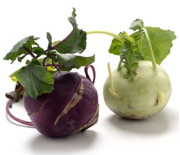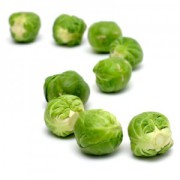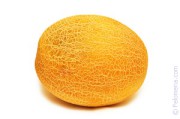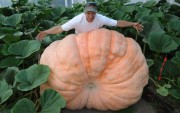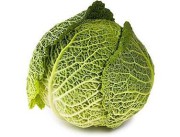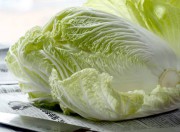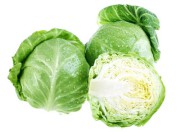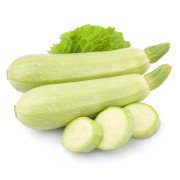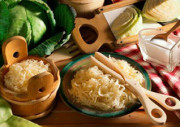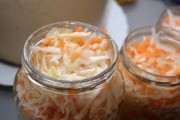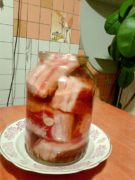Kohlrabi cabbage: properties, benefits and harms, vitamins, composition. What kohlrabi cabbage looks like - description and photo.
Kohlrabi is native to Northern Europe. Here, according to chroniclers, cabbage first appeared in 1554, and 100 years later it spread throughout Europe, including the Mediterranean. Translated from German as “cabbage turnip”.
Kohlrabi is unpretentious, resistant to diseases and pests. Thanks to its rapid ripening, this cabbage can be planted even in the north.
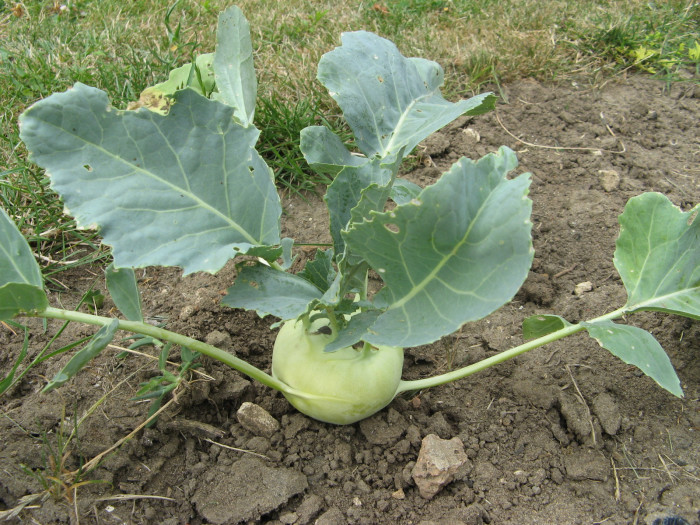
Photo: Kohlrabi in the garden.
Kohlrabi cabbage is a stem vegetable. The edible middle of this vegetable, reminiscent of a cabbage stalk, is pleasant to the taste, juicy and tender. In some countries, young leaves are also eaten. They contain as many useful substances as a fruit.
Eating kohlrabi cabbage improves metabolism. It is low in calories (42kcal/100g). Carbohydrates (glucose and fructose) contained in the stem fruit give a feeling of fullness - you won’t want to eat for a long time. All these properties will benefit people who are losing weight. Moreover, the result of losing weight will last for a long time. Kohlrabi puree is good for small children.
In terms of the amount of vitamin C, kohlrabi can be compared with lemon, and in terms of the absorption of all vitamins, it is superior to apples. It also contains other vitamins: A, B, B2, PP, as well as proteins. From minerals: calcium, potassium, phosphorus, magnesium, cobalt, iron.
What are the benefits of kohlrabi:

— Kills infections, so it can be used to fight against various infectious diseases;
— B vitamins found in cabbage calm the nerves;
— Has a beneficial effect on kidney function, as it is a good diuretic;
— Has a beneficial effect on the liver, gall bladder;
— Lowers blood pressure;
- The sulfur content in kohlrabi reduces the possibility of developing intestinal cancer.
— In folk medicine, kohlrabi cabbage is used to treat:
— Freshly prepared kohlrabi juice helps with coughs and inflammation of the oral cavity;
— Kohlrabi juice is taken for diseases of the liver, kidneys, and spleen;
- For anemia;
— For hepatitis, drink a quarter glass of juice with 1 tbsp. a spoonful of honey 3-4 times a day before meals, 10-14 days;
— A decoction of tops treats asthma and pulmonary tuberculosis.
But, like any product, kohlrabi, in addition to its benefits, can also cause harm to the human body. Some people are intolerant to it. Also, people with stomach diseases should not eat kohlrabi dishes, as they increase the acidity of gastric juice.
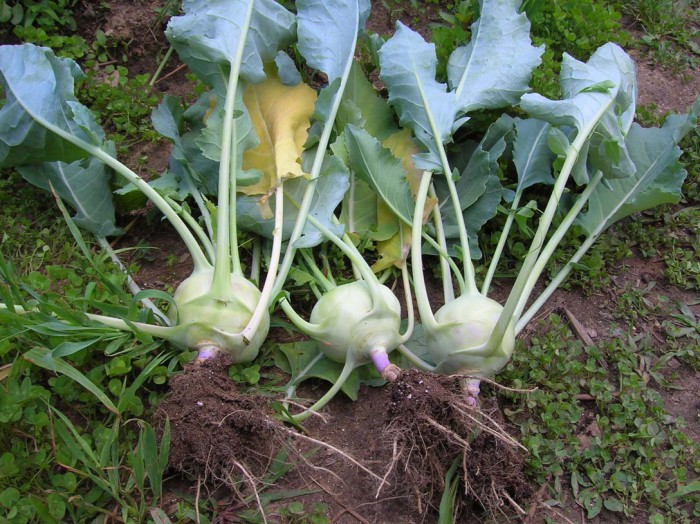
Kohlrabi can be kept fresh for a long time in the basement. Also, like any cabbage, it can be salted, fermented, pickled, and dried.

